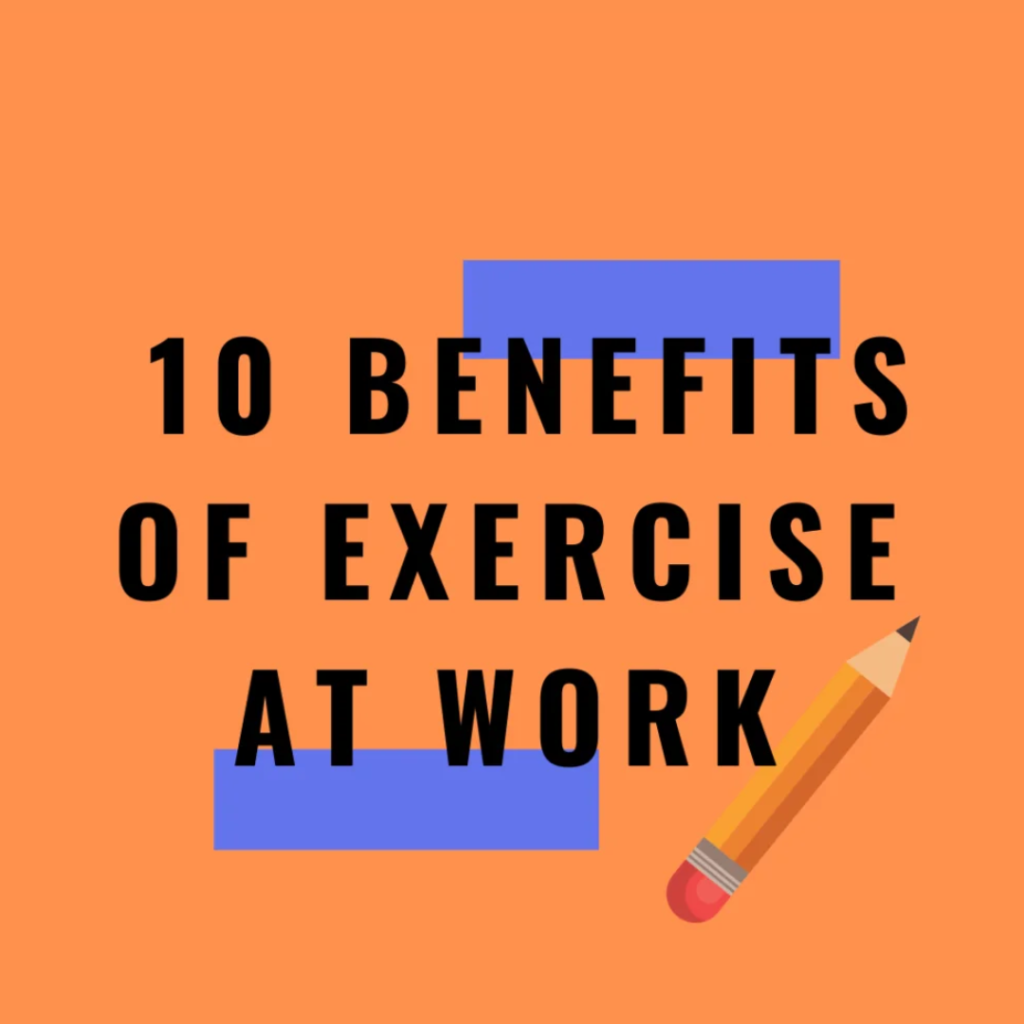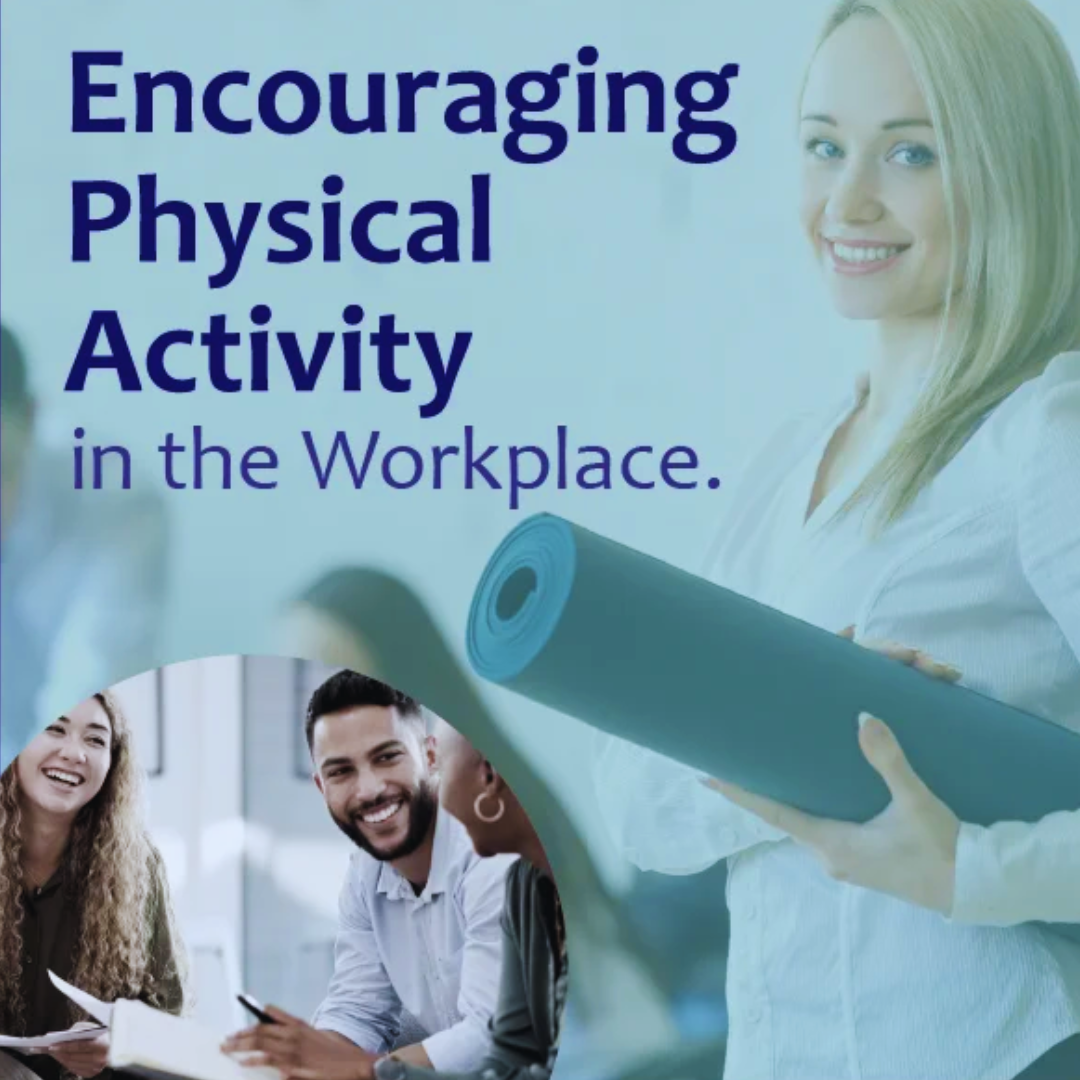
With more jobs requiring long hours of sitting, staying active is essential for overall health. A study by the European Commission in 2022 found that 45% of Europeans do not exercise. Younger people are more active, with 54% of those aged 15-24 engaging in physical activity. However, this number drops to 32% for those aged 40-54.
This decline suggests that corporate jobs may contribute to lower activity levels. As a result, more organizations are promoting both individual and team-based exercise during the workday. Let’s take a look at some benefits of exercise at work.
6 Benefits of Exercise at Work

Here, you will explore the top 6 benefits of exercise at work.
Improves Productivity and Performance
Getting some exercise can boost productivity and overall performance throughout the day. Many people plan to hit the gym or go for a run after work. However, by the time their workday ends, they often feel too drained to follow through.
Even if their day wasn’t particularly stressful, sitting for long hours in the workplace can lead to a lack of motivation to be active. Starting the day with exercise or incorporating movement into the workday can help improve alertness, focus, decision-making, concentration, energy levels, and the ability to handle multiple tasks.
Both strength training and aerobic exercises offer these benefits that are included in the benefits of exercise at work. The key reason behind it is that exercise increases blood flow to the brain, which helps enhance mental performance. Also, exercising during your workday will increase and sustain your energy throughout the whole day.
Reduces Absenteeism
Long-term absences from work are often caused by serious medical conditions, stress, mental health issues, back pain, and musculoskeletal injuries. During cold and flu season, it’s common to see a sharp increase in absenteeism.
However, regular exercise at work can help strengthen the immune system, leading to better overall health and fewer absences. Staying active lowers the risk of both mental and physical health problems.
Improves Creativity
A 2014 study from Stanford University found that walking can greatly enhance certain types of thinking related to creativity. Researchers compared people’s creativity levels while they were sitting versus walking and discovered that walking increased creative output by an average of 60%.
Walking was shown to improve both convergent thinking, which helps with problem-solving, and divergent thinking, which allows people to generate unique and open-ended ideas. The idea that people should sit less has been encouraged for over a century. Even famous writer Charles Dickens walked 20 to 30 miles daily to boost his creativity.
Many creative individuals today also choose to walk more to improve their creativity and come up with fresh ideas. As Dickens himself once said:
“If I could not walk far and fast, I think I should just explode and perish.”

Aids in Coping with Chronic Stress
Work can be a major source of stress, no matter what type of job you do. At some point, everyone experiences pressure or challenges that feel overwhelming. Short-term stress can actually be helpful by improving concentration and focus.
However, chronic or long-term stress can have serious negative effects, especially when caused by excessive workloads, conflicts with colleagues, or difficult work environments. Stress isn’t always work-related; it can come from personal issues at home or even the daily commute. But no matter the source, stress often follows people into the workplace.
Therefore, how does exercise help prevent stress? Physical exercise helps lower stress by reducing cortisol levels, the hormone linked to stress. After moderate exercising, cortisol levels drop, leaving you feeling more relaxed and at ease.
Exercise does more than just provide a short break from stress; it also has long-term advantages. Regular physical activity strengthens the body’s ability to handle stress, making us more resilient over time. This is why healthcare professionals and doctors often encourage people to stay active to reduce stress and cope better with stressful situations.
Benefits for Team Building
A team’s success depends not only on individual skills but also on how well members work together. Team-building activities encourage better communication, unity, and collaboration, especially when they involve tasks outside of daily work responsibilities.
Incorporating exercise into team-building events can be a great way to promote both teamwork and an active lifestyle. These activities help employees understand each other’s strengths and improve how they work together while also encouraging healthier habits.
Workplace movement challenges, like tracking daily steps and creating friendly competitions, can motivate employees to be more active. This not only supports a healthier lifestyle but also adds an element of fun and engagement to the work environment.
Betters Mood and Mental Health
The benefits of exercise at work include physical health benefits. Decades of research show that exercise helps lower the risk of type 2 diabetes, heart disease, and even conditions like dementia. But its benefits go beyond physical health. Staying active at work can also boost mental well-being and improve mood, positively impacting productivity and personal life.
Exercise supports the release of feel-good hormones like endorphins, serotonin, and dopamine. A study from 2015 found that regular physical activity may help reduce the risk of developing depressive symptoms. For individuals with mild to moderate depression, moderate to vigorous exercise can be just as effective as therapy or medication, with fewer side effects.
The National Institute for Health and Care Excellence (NICE) suggests that children and young people with mild depression should aim for at least three weekly exercise sessions, lasting about 60 minutes each, over a period of 10-14 weeks. When incorporating movement into your workday, try to make it enjoyable. Adding a playful element can make it even more beneficial!
What Employers Can Do to Encourage Exercise in the Workplace?

Employers can help their employees be more active at work by using both personal and workplace strategies. There are many ways to promote and encourage more movement throughout the workday:
- Implementing Walking or Standing Meetings: One lesson from the COVID-19 pandemic is that many tasks, including meetings, can be done remotely. Encourage employees and managers to have more “walk and talk” meetings, whether over the phone or in person.
- Offering Gym Facilities: Provide facilities that make it easier for employees to stay active. While having a gym and shower facilities inside the office is ideal, it may not be affordable for small and medium-sized businesses. A great alternative is offering discounted corporate gym memberships to encourage employees to exercise.
- Educating Your Employees: Although it may seem simple, educating employees about the risks of a sedentary lifestyle in a clear and supportive way can motivate them to be more active for the right reasons.
- Developing Policies: You can create policies that give your employees more flexibility in their work schedules. Allowing them to start later, finish earlier, or take a longer lunch break can make it easier for them to find time to do physical exercise. These small adjustments can have a big impact on their overall well-being.
- Providing Sit-Stand Desks: Some say that excessive sitting without exercise can be harmful. Providing Sit-Stand Desks to your employees helps improve posture and promotes regular breaks and stretching. In this way, your employees can sit and stand during their work time.
Final Words on Benefits of Exercise at Work
Incorporating exercise into the workday may seem challenging at first, but it can greatly enhance the overall work experience. Employees who stay active are more prepared to tackle their tasks with improved creativity, increased productivity, and better problem-solving skills.
Regular physical activity can also boost mood, strengthen the immune system, support mental well-being, and improve sleep quality. All of these contribute to a healthier and more effective work life. We are hopeful that this article has helped you to understand the benefits of exercise at work.
